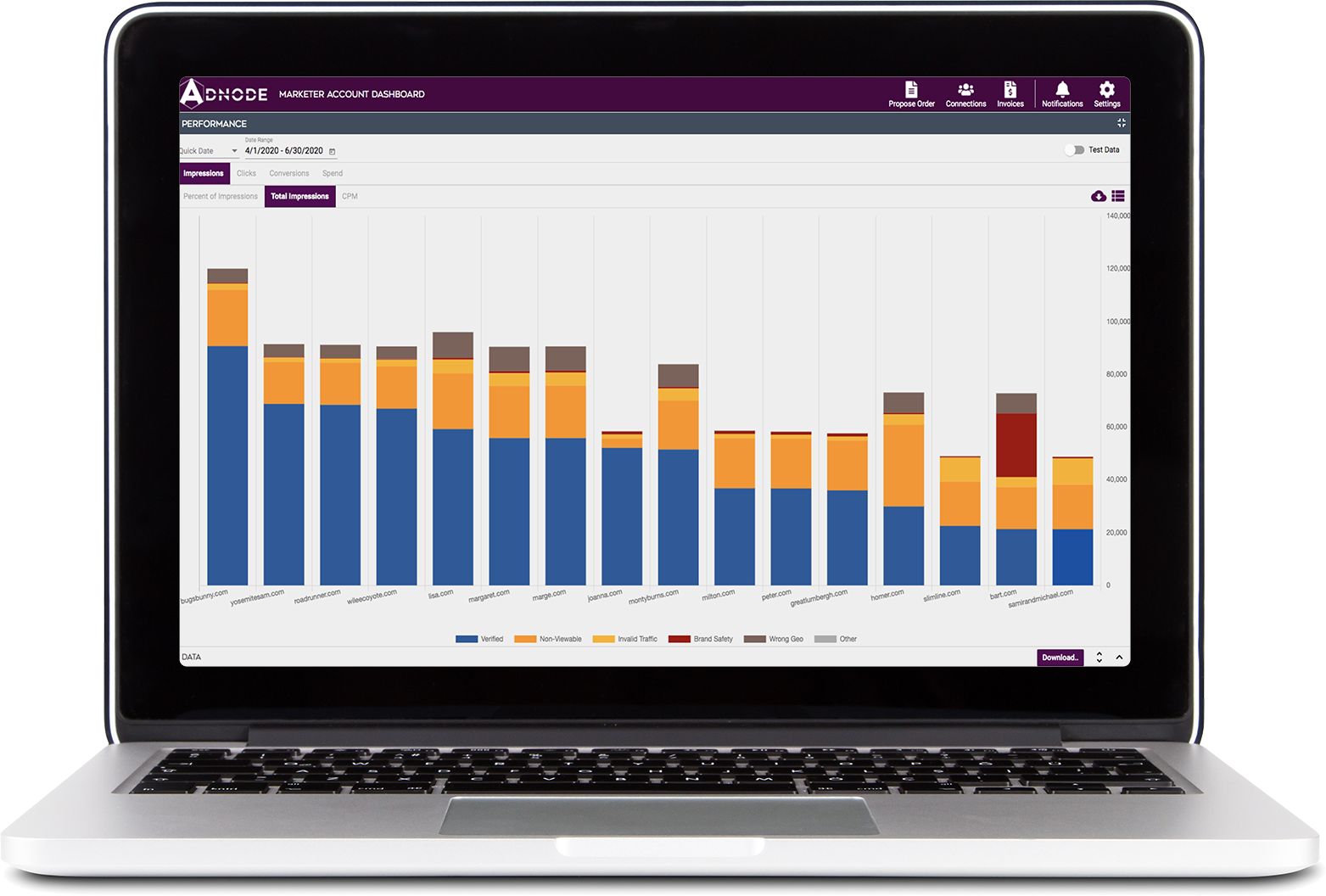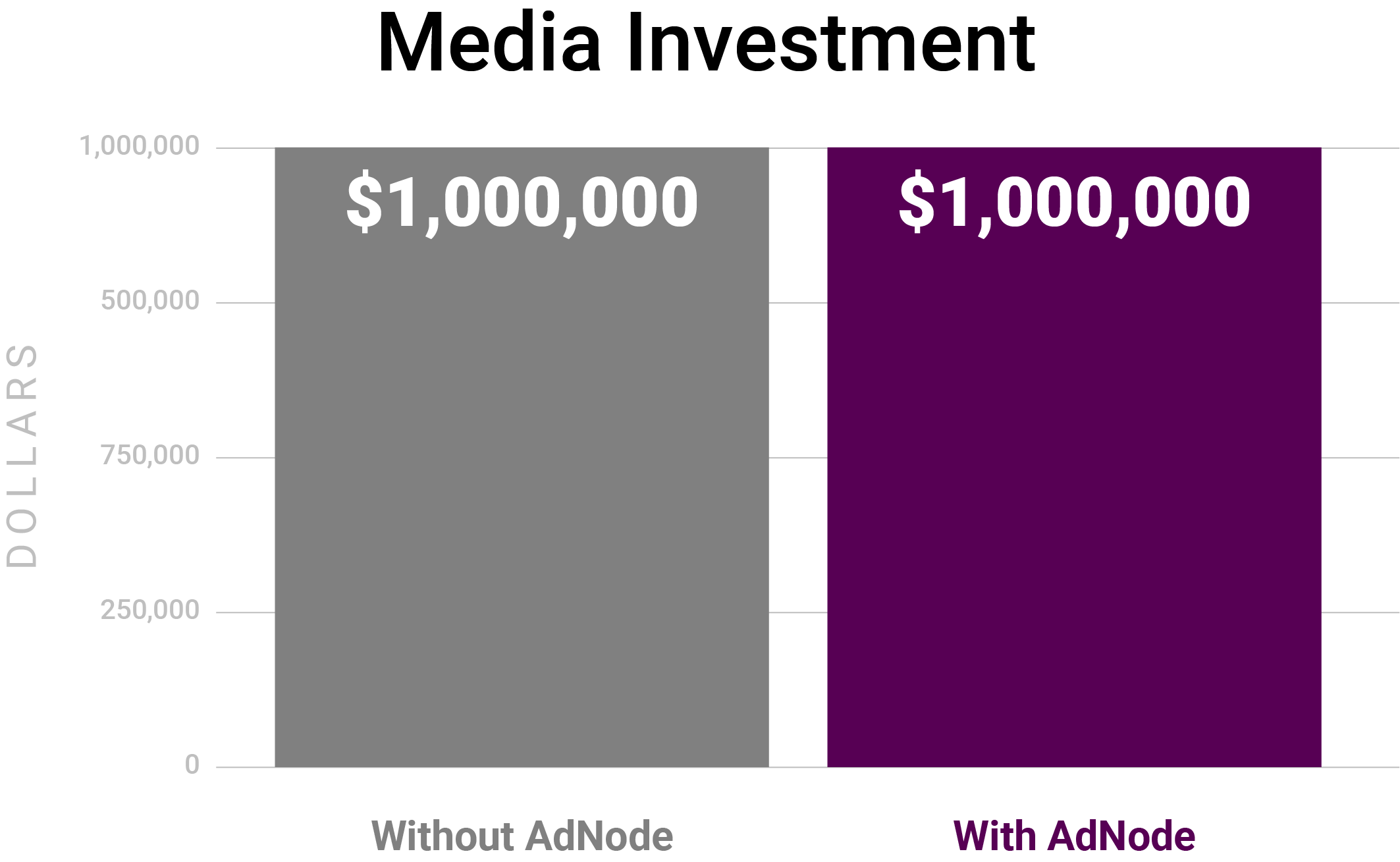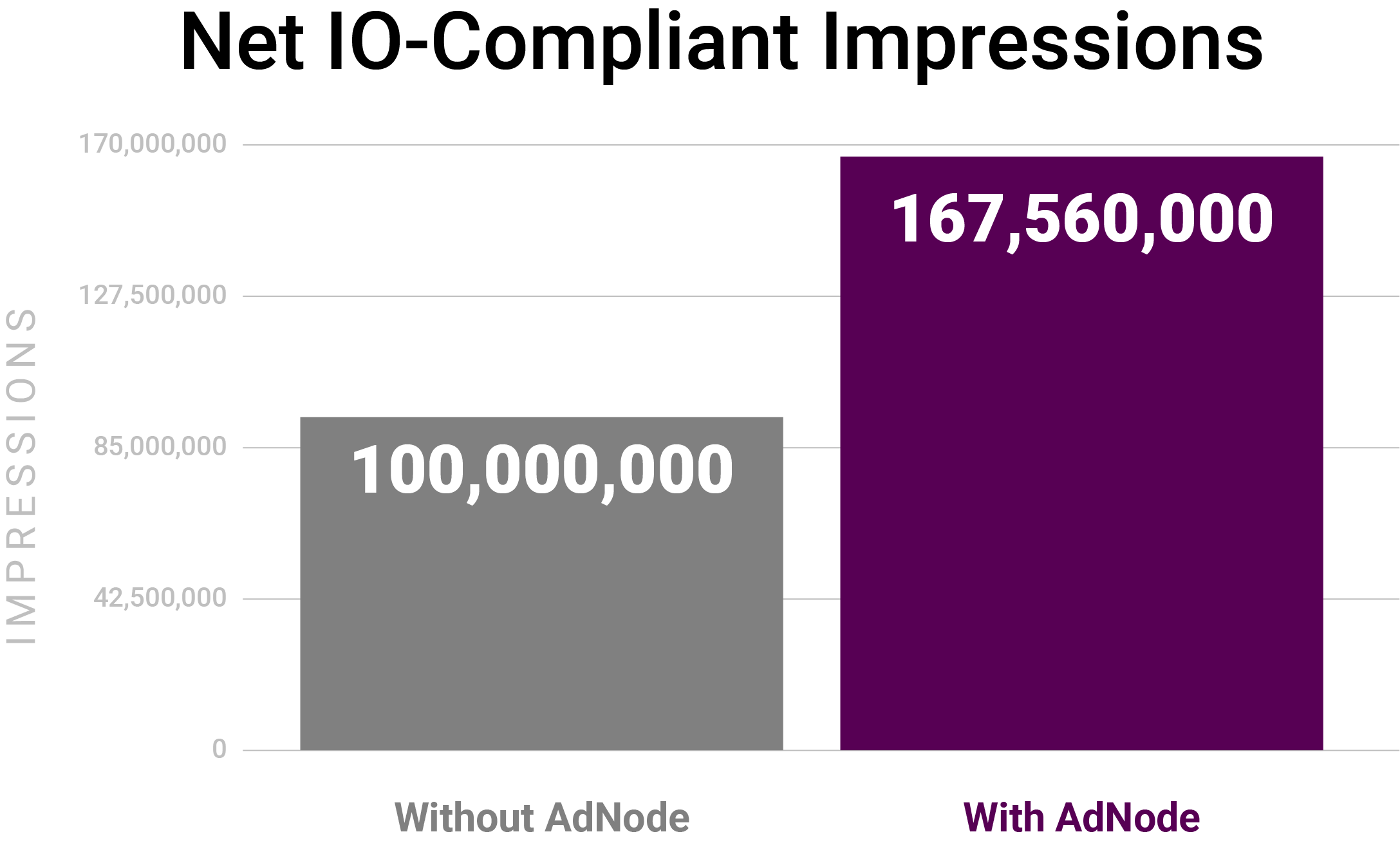THE ADNODE PLATFORM
End-To-End Automation For Direct Campaigns
DIGITAL RFP
(Optional New Feature)
Submit and respond to RFPs online through the AdNode platform, rather than through email chains. Compare proposals from all your direct publishers in one place and reduce order entry issues.
Smart Contracts
Create “smart contracts” which are digital insertion orders with clear business rules for billable ad impressions, such as viewability and brand safety requirements, flight dates, placement names, ad units, and CPMs.
Visibility
AdNode pulls in data directly from the measurement vendor selected in the insertion order, such as Moat or AdLoox. The platform automatically applies the business logic and pricing from your insertion order to calculate which impressions are billable or not, and why.
Optimize: Daily Analytics
Publishers and agencies see the same data for billable impressions and earnings for any inventory bucket filtered by ad unit, domain, device type, audience target, advertiser, geography or other metric on a daily basis.
Automated Reconciliation
Invoices for amounts due to publishers are automatically generated by AdNode. There are no discrepancies, disputes or surprises. Both the agency and publisher agree to honor the billing calculations in AdNode, making it the single source of truth.
DIGITAL RFP
(optional new feature)
Submit and respond to RFPs online through the AdNode platform, rather than through email chains. Compare proposals from all your direct publishers in one place and reduce order entry issues.
Smart Contracts
Create “smart contracts” which are digital insertion orders with clear business rules for billable ad impressions, such as viewability and brand safety requirements, flight dates, placement names, ad units, and CPMs.
Visibility
AdNode pulls in data directly from the measurement vendor selected in the insertion order, such as Moat or AdLoox. The platform automatically applies the business logic and pricing from your insertion order to calculate which impressions are billable or not, and why.
Optimize: Daily Analytics
Publishers and agencies see the same data for billable impressions and earnings for any inventory bucket filtered by ad unit, domain, device type, audience target, advertiser, geography or other metric on a daily basis.
Automated Reconciliation
Invoices for amounts due to publishers are automatically generated by AdNode. There are no discrepancies, disputes or surprises. Both the agency and publisher agree to honor the billing calculations in AdNode, making it the single source of truth.
Reduce hours spent on post-campaign reconciliation, optimization and media planning by up to 90%.
The advertiser’s agency and the publisher mutually agree to bill based on billable impressions verified by AdNode. The billable impressions are calculated daily based on the insertion order and data received from the approved measurement vendor.
Daily reporting for billable impressions and media spend, viewability, brand safety, clicks and more to improve performance of direct campaigns.
User-friendly dashboard for organizing impression-level data for direct campaigns to compare performance and media spend by ad unit, publisher, domain, device type, audience target, or dozens of other metrics.
Integrate your ad server, ad measurement vendor and insertion order system. AdNode plays well with an ad agency’s existing systems and business processes to reduce friction.
Every agency and publisher has access to 24/7 live help, by phone or email. Putting customers first is one of our core cultural values.




Platform FAQs
Answer: No technical integration is required and AdNode does not tag publisher websites.
The steps for launching your first direct ad campaign are as follows:
1) Receive an invitation to create your AdNode account from your ad agency partner. If you are included on a Request for Proposal (RFP) for a media plan using AdNode, that counts as an invitation.
2) Identify who will be your admin user. Provide their name, work email and job title to your AdNode contact. Your admin user can create logins for members of your organization.
3) Establish connections with advertisers. This is as simple as connecting on LinkedIn. For privacy purposes, orders may only be created with advertisers that approved you as a connection.
4) Setup optional notifications. Notifications can arrive either in-app or through email. This will alert you of key events such as when a new insertion order is received or provide a daily summary of your earnings through AdNode.
5) Sign up for a subscription package on AdNode. Subscription plans are based on the revenue generated through AdNode by publishers.
6) Propose or approve an insertion order. The insertion order specifies details such as the viewability criteria, brand safety rules, package names, ad units, flight dates, number of impressions and CPMs. Both the agency and publisher must approve the IO before your campaign begins.
7) Login to check that your ad campaign is running smoothly and review performance. You can identify which inventory buckets have a higher percentage of billable impressions and why, right away!
8) Review your billable pacing at any time. At the end of each calendar month, the final invoice is available. This is the amount owed by the advertiser to the publisher.
Answer: Absolutely! The AdNode Platform works alongside your agency’s existing workflows and your preferred ad tech vendors. We typically offer either manual or fully automated integrations with popular ad servers and media planning tools. Well-known ad measurement vendors already are directly integrated with AdNode. The objective is to reduce friction in your workflow, not to add to it.
Answer: The marketer and publisher agree on the controlling ad measurement company (for example, Moat or AdLoox) which will be providing official reporting for performance in the AdNode insertion order (“smart contract”). All measurement vendors integrated in AdNode are MRC-certified. AdNode validates the data received from the measurement vendor using blockchain technology, ensuring a consistent “source of truth” for the ad campaign.
Answer: No. All advertising measurement is provided by independent third parties that are selected in “smart contract” insertion orders by marketers and publishers. The insertion order establishes that the measurement provided by the controlling measurement vendor is final and governs billing calculations in AdNode.
Answer: The business rules for viewability are entered in your Insertion Order created in AdNode. They are approved by the advertiser’s ad agency and the publisher. AdNode supports many different options for business rules or viewability criteria. Our system automatically processes billing – for every, single ad impression – exactly based on the agreed upon business rules.
For example, some digital advertising agencies may require that 50% of the pixels of an ad impression are viewed for at least 1 continuous second. Other ad agencies may require that 100% of the pixels of an ad are viewed for at least 1 continuous. Please check with your ad agency partner on their viewability criteria – this tends to be consistent across each advertiser or agency.
Answer: AdNode supports the following bill models:
- CPM (Cost per thousand ad impressions) – our most popular model for display ad campaigns. For example, a $10 CPM means the price is exactly $0.01 per billable ad impression.
- Flat Rate – the entire placement is billed once the first ad impression is successfully delivered.
- CPC (cost per click) – billing is determined for every click.
- CPE (cost per engagement) – billing is for every successful view of the content. This is a common model for content marketing ad campaigns.
- CPA (cost per action) – billing is for every completed action. An example of a completed action might be a lead-generation form or an eCommerce cart checkout.
Answer: AdNode processes advertising measurement data as soon as it is received from the ad measurement vendor. Timing varies by the measurement vendor and the specific implementation incorporated by your advertising agency – it might be near real-time, hourly or daily. You can login to check that campaign reporting is achieving your KPIs. If there are any issues, you can make changes or pause the campaign.
Answer: AdNode enables you to see ad measurement performance based on a range of filtered criteria such as order name, placement package, ad unit, targeting, domain, publisher/marketer name, geography and other factors. You can select multiple filters to track down issues and opportunities for success.


